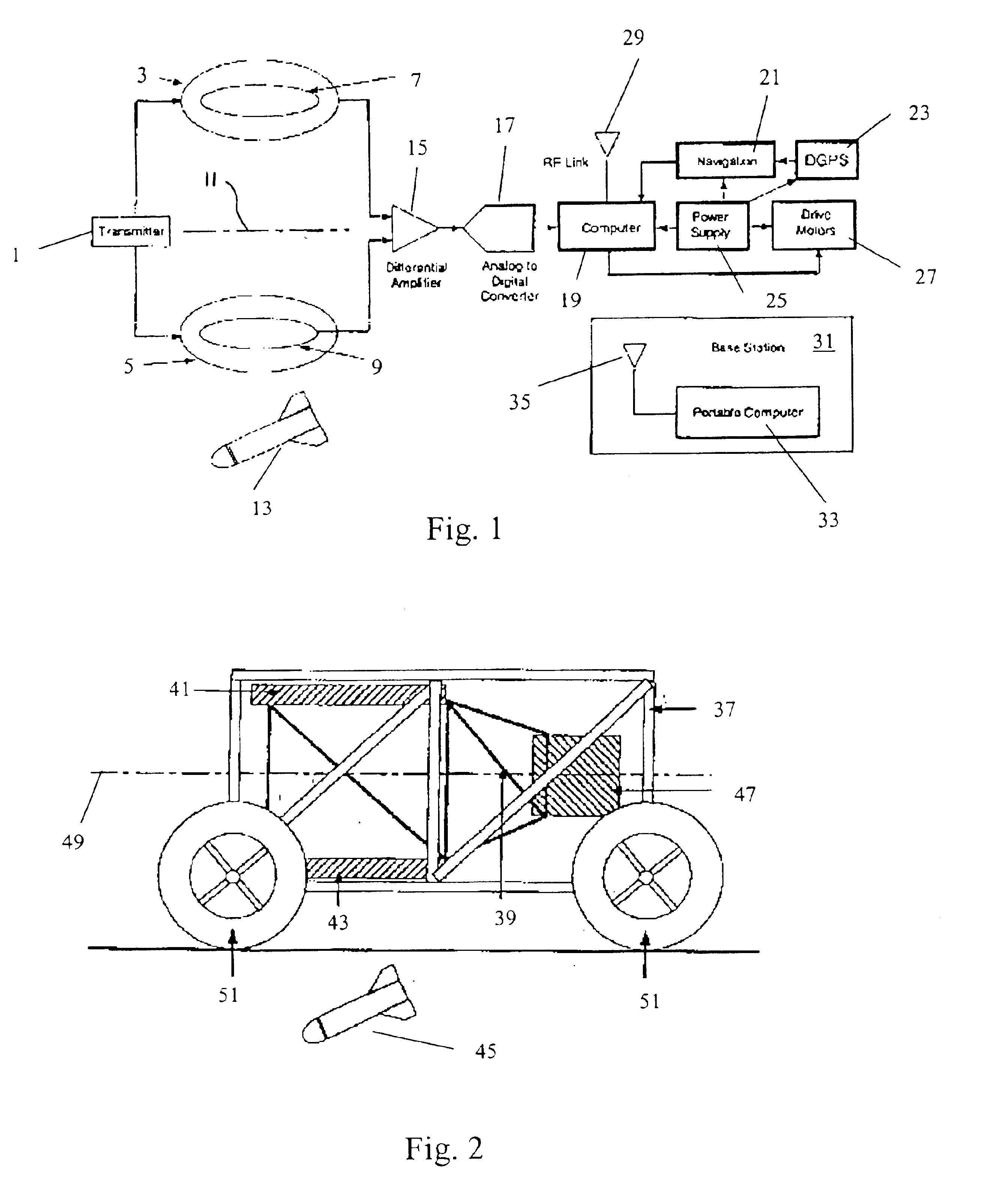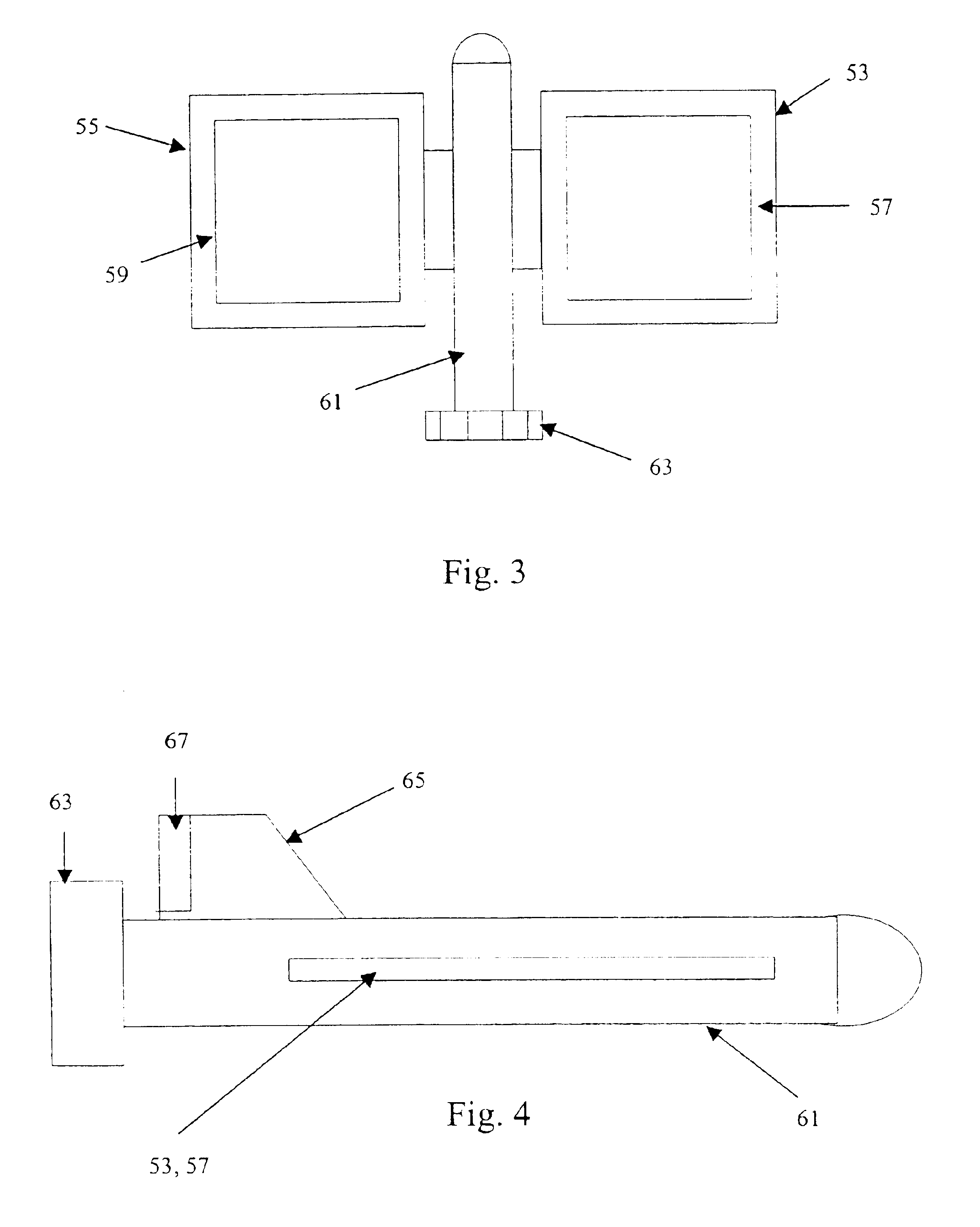Compact, autonomous robotic detection and identification sensor system of unexploded ordnance site remediation
a sensor system and autonomous robotic technology, applied in the field of metal target detection, can solve the problems of unexploded ordnance, land mines, and particularly mines, and the area where uxos are present may not be used for other activities, and many people are killed and maimed
- Summary
- Abstract
- Description
- Claims
- Application Information
AI Technical Summary
Benefits of technology
Problems solved by technology
Method used
Image
Examples
Embodiment Construction
)
The present invention provides a device that can operate autonomously on land or in the water. Automation provides a key component that permits more cost effective and safer UXO and land mine site remediation. The compact, autonomous robotic detection and identification system according to the present invention provides significant advantages as compared to known systems and methods.
The present invention provides a compact, rugged, and easy to transport and deploy lightweight robotic sensor platform. The unique electromagnetic induction sensor configuration of the present invention provides a compact, self-powered autonomous sensor system design. The present invention utilizes electromagnetic induction (EMI) sensor technology to detect buried metal targets such as UXO. Both time and frequency domain EMI sensor technology could be utilized. For simplicity of discussion, a time domain or pulsedtransmitter version of the device will be described. One skilled in the art could construct...
PUM
| Property | Measurement | Unit |
|---|---|---|
| size | aaaaa | aaaaa |
| weight | aaaaa | aaaaa |
| magnetic field | aaaaa | aaaaa |
Abstract
Description
Claims
Application Information
 Login to View More
Login to View More - R&D
- Intellectual Property
- Life Sciences
- Materials
- Tech Scout
- Unparalleled Data Quality
- Higher Quality Content
- 60% Fewer Hallucinations
Browse by: Latest US Patents, China's latest patents, Technical Efficacy Thesaurus, Application Domain, Technology Topic, Popular Technical Reports.
© 2025 PatSnap. All rights reserved.Legal|Privacy policy|Modern Slavery Act Transparency Statement|Sitemap|About US| Contact US: help@patsnap.com



